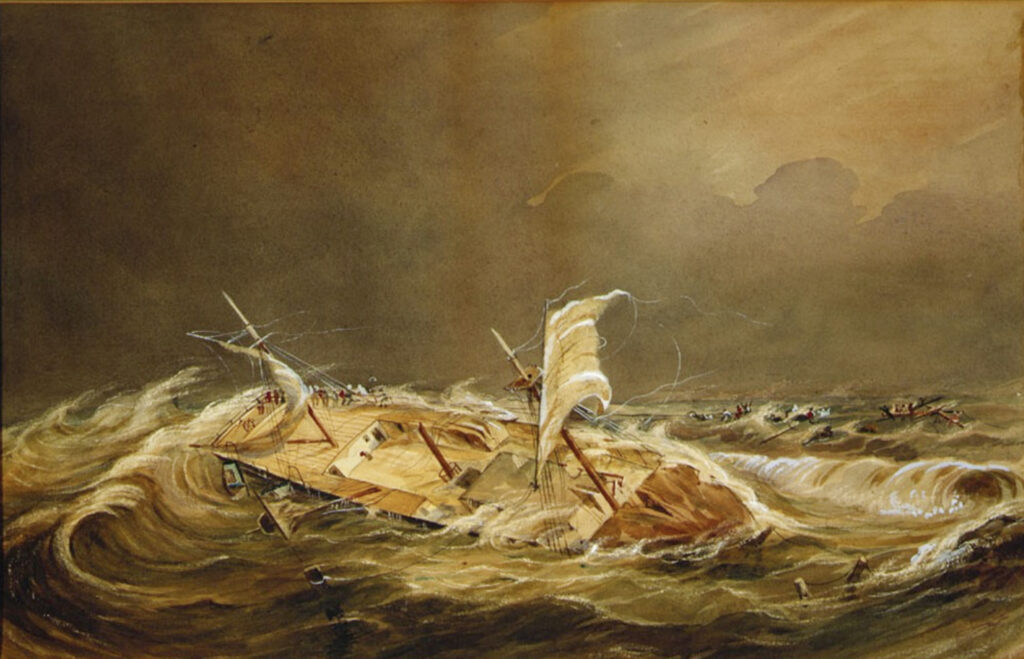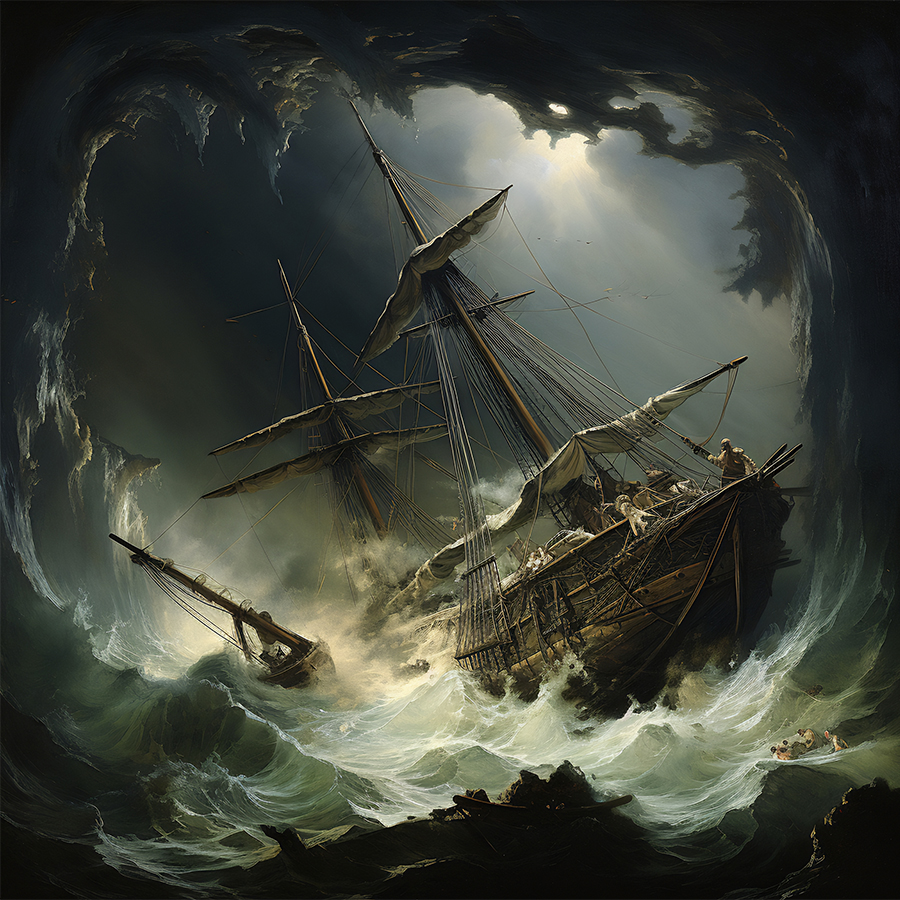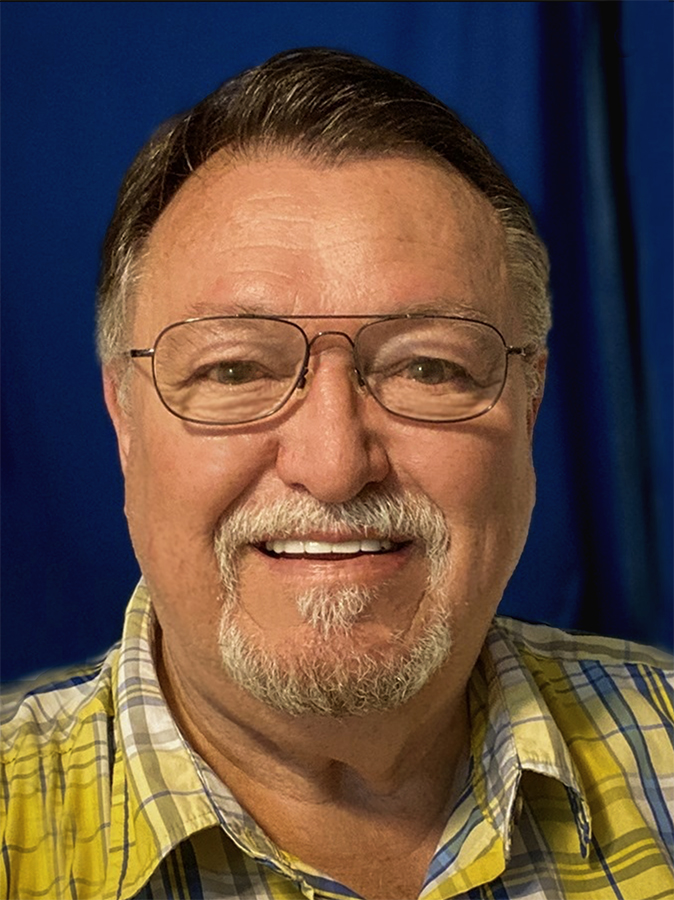[When Christian Wilson’s father, Elder Paul Wilson, a former senior marketing missionary at the Polynesian Cultural Center in the mid-1990s, visited Laie in March 2023 and gave the interview above, among other things he mentioned that his great-great-grandparents, Charles and Rosa Clara Logie had ties to Tahiti. I asked Chris, a PCC alumnus, to share more about that following, fascinating 1855-‘56 story with us.

Ironically, before Chris even learned of his great-great-great Logie grandparents’ connections with Tahiti, he started writing a fictional book at age 15 while living in Sao Paulo, Brazil (where his father worked for Eastman Kodak at the time) about a small group of people who leave Australia and shipwreck in Raiatea, French Polynesia. This was five years before the Church called him to serve as a French/Tahitian-speaking missionary in French Polynesia.
“I like to think that Rosa Clara or her husband inspired me to write my book to prepare me for my mission,” Chris recently said. “Anytime I think that life is tough, all I have to do is remember what they had to go through to survive. Of the hundreds of LDS migrant voyages during the 19th century to Utah, the Julia Ann is believed to be the only ship that had sunk and claimed lives: Four of the 28 LDS members on board perished.” — as shared with Mike Foley]

“Rosa Clara and Charles were married in Australia in 1853, and had their first baby, Ann, on June 27, 1854.” Chris said. “When Ann was 14 months old, they boarded the three-masted sailing ship Julia Ann to make the long trip to California, with Salt Lake City as their final destination.”
“Unfortunately, disaster struck four weeks later. On October 3, 1855, the ship mysteriously went off-course and hit an underwater uninhabited atoll about 100 miles west of Raiatea in the middle of the night and began to break apart.”
“Confusion reigned until one of the ship’s crew swam to the reef and managed to fasten a rope. The captain prepared to ferry the women and children one at a time to the reef.”
“No one knew what lay ahead in the pitch-black night. The women were afraid. Finally, Rosa Clara, not yet eighteen, volunteered to be the first. Hurriedly, she helped tie baby Ann securely to Charles’s back in a brown woolen shawl and readied herself to be taken to the reef. But then, before Rosa Clara’s horrified eyes, her husband and baby were swept overboard by the huge seas. One of the sailors rescued them unharmed.”
“With enormous courage, then, in leaving her family on the wreck, Rosa Clara climbed onto the captain’s lap and was pulled, hand over hand, to the reef. Here the captain left her standing barefoot on the sharp coral, chest-deep in the sea, with the surf breaking on the reef. She stayed alone and in darkness while he returned for the other women.”
“Gradually, most of the company, including Charles and baby Ann, arrived safely. But not all were so fortunate. Two little girls were washed off the deck and were lost. Two women and a small baby drowned in the cabin, and the ship slowly disintegrated on the reef.”
“When daylight arrived, the crew managed to get the passengers from the reef to a small island called Manuae, which became their home for the next eight weeks.” Meanwhile, sailors and one passenger soon made attempts to help the survivors finally get rescued [based on the following]:
An article by Fred E. Woods about the shipwreck and subsequent rescue attempts described the first two weeks of the outbound journey from Australia as “exceedingly unpleasant” with “head winds…and much rain.”
On October 4, 1855, the Julia Ann “with a tremendous crash, dashed head on to a coral reef. She immediately swung round with her broadside to the reef, and the sea made a complete breach over her at every swell.” A missionary passenger returning to America later wrote, “the ship was breaking up fast.”
Passenger Esther Spangenberg, an actress, later told the San Francisco Daily Herald, “We could hear her bottom grate harshly on the rocks. The Captain . . . rushed on deck, but before he could reach it, the ship was completely fast on the reef. Mothers [were] screaming, and children clinging to them in terror and in dread; … the starboard side of her was opening, and the waves were washing in and out of her cabin.”
The captain later wrote, “The bell at the wheel, with every surge of the sea, still tolled a knell to the departed…”
After the survivors made their way to a small island, found sources of water, shellfish, sharks, turtle eggs, and built thatched huts over the next five weeks, crewmen eventually patched up a row boat and set out for Samoa — about 1,500 miles away. While Tahiti was much closer, winds favored rowing west.
The first attempt failed, and before rowing for Samoa again, “Grandpa” Logie dreamed of a “boat…floating bottom up, and the drowned bodies of her crew floating around her.” After that, no one would volunteer to go.
The captain later said the “same Mormon Elder…had another vision,” in which he saw a crew of 10 safely reach Tahiti. Nine volunteered to try, and the Elder also volunteered. They reached Bora Bora in late November, and with the help of the British consulate, arranged for the schooner Emma Packer to sail from nearby Huahine to retrieve those marooned on Manuae.
Finally reaching Tahiti, the survivors then struggled to find passage to San Francisco. Logie, for example, “worked in Tahiti for many months to secure the funds needed to complete their journey to America,” which took the Wilson ancestors about two more years before arriving in Utah, including a “stop along the way to work on a ranch near Reno, Nevada.”
“Charles and Rosa Clara Logie eventually settled in American Fork, Utah,” where they raised twelve children. The small branch in Sydney where Rosa Clara lived eventually became the nucleus of the Church in Australia.
_ _ _ _ _ _ __ _ _ _ _ _ __ _ _ _ _ _ __ _ _ _ _ _ __ _ _ _ _ _ __ _ _ _ _ _ __ _ _ _ _ _ _
Chris also shared another interesting coincidences with the story:
Christian Wilson , who began studying computer science at Ricks College (now BYU Idaho) before his mission, started working part-time at BYUH/PCC joint MIS department in 1982. “In 1985, our department underwent a restructuring, and I was assigned to work for the MIS department at PCC until 1999,” Christian said. “Subsequently, I served as an internet consultant for them until approximately 2015.
“Throughout this time, Fred Camit (now retired) was our department manager, and I worked alongside Lei Cummings, and Willie Kwansing, plus the late Solomon Kahawaii, Annette Taufa, and Allen Kroft. Together, we installed PCC’s initial reservations, accounting and payroll software and hardware through Paciolan Systems in 1987. It is remarkable to witness that many of PCC’s sales are now being conducted on the internet.”
